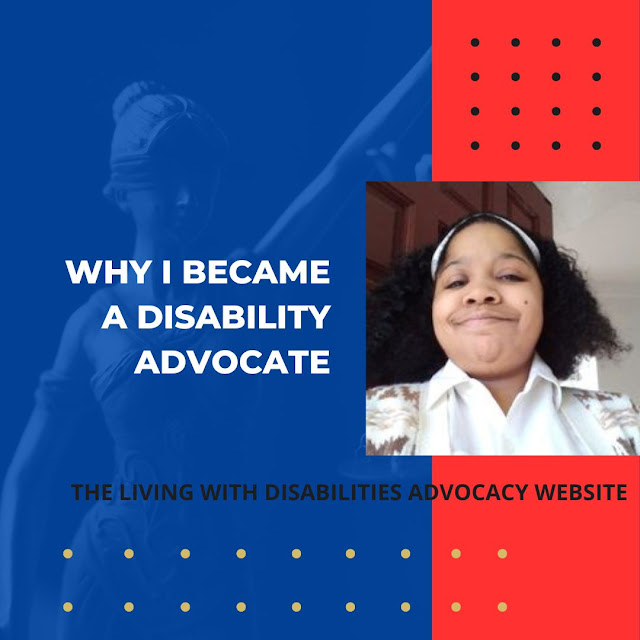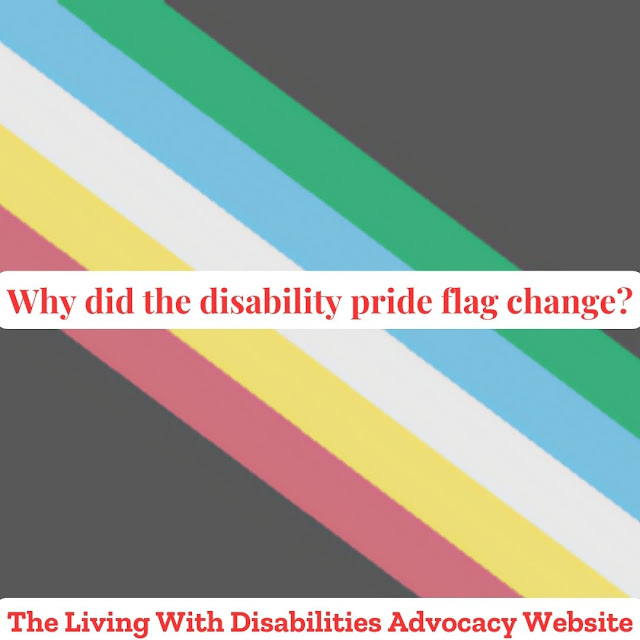Why I became a disability advocate
If you're a new visitor to this advocacy website, this page aims to increase public understanding of those with disabilities and other conditions.
We suggest you seek a licensed professional counselor or healthcare provider for anything you read on this site.
This week, Living With Disabilities will talk about Why I became a disability advocate.
For those new to Living With Disabilities, I suggest starting with Learning to accept myself. Please keep reading this post if you have been with Living With Disabilities from the beginning.
At the beginning of March, Katrina was introduced to the concept of living with disabilities. She was struggling with the constant rejection from job applications and felt shattered every time she tried again. One day, while watching her favorite daytime show, The Chew, she saw five people attempting to recreate a PayDay candy bar. However, frustration set in, and watching TV became an unhealthy habit. As a result, Katrina was forced to limit her TV-watching time.
The host cut her shows down to only a few: The Chew, Grey's Anatomy, and How to Get Away With Murder. Including Dancing With The Stars.
Katrina's always dreamed of having her own show, and she wanted to become a host someday. When the concept was handed to her, she took that opportunity to create a space for people with disabilities because she always wanted to work with people with disabilities. It was more so with children. Katrina wanted to work with children with disabilities. But to work with children, she needs to go to college and get her degree. She didn't accept the fact that she couldn't work with children yet; she looked at it this way: children grow up and become adults, and during the growing process, there are obstacles. There were some obstacles she had faced, and it was time to address these barriers. She knew that she wasn't the only person who dealt with barriers other people with disabilities have, and the best way was to bring them out into the open.
Obstacles give rise to stories, and stories lead to success! People achieve victory when they surpass those challenges. It went beyond only their hardships and paths to achievement. Katrina still has some hardships. Yet she will surpass those challenges. People with disabilities have encountered and continue to encounter several obstacles. More than abled bodies. Therefore, Katrina started slowly accepting her disability, which took years or even months to open up to herself. She also noticed others were dealing with the same thing. It's not only self-abnegation that a person with a disability goes through; there are also accessibility, health care, employment, communication, physical, policy, problematic, social, and transportation barriers.
We'll retell this narrative about how Living With Disabilities got its start for anyone who are new to the site or podcast. This will be a refresher for you if you have been a reader for a while. Living With Disabilities officially launched in March 2015 and displayed the location of appointments, which were made via a conference call application, much as they are to this day. Being interviewed at your own home is a component of the idea. and for podcasters, the broadcast is posted on Spotify and YouTube. Everybody has a narrative, and success can be found in any story. Tales of what has gone wrong and what they have accomplished in the face of hardship.
Because of Katrina's life path, which led her to create this place for many others in addition to herself, able-bodied individuals may now review what has to change in order to accommodate persons with disabilities. because, like their counterparts who are able-bodied, people with disabilities are gifted and hard workers. We are denied the opportunity or room to express who we are. Talent and a variety of talents would be demonstrated, opening doors to potential career possibilities. However, there are several gaps that must be filled.
The host makes a point of saying, "You have to be the change if you want to see change." often. Living with Disabilities wholeheartedly agrees with this statement. Let's see a shift in society where individuals with disabilities are accepted and valued for who they are: humans. Finally, a worker who promotes equality doesn't finish their work until it is achieved. The host turned as a disability advocate for this reason. The host frequently emphasizes, "You have to be the change if you want to see change."
Living With Disabilities Presents: The Advocacy Table
a space created for people with disabilities to be able to have freedom of speech and talk on different topics surrounding the disability community. To get more details, check out The Advocacy Table. To become a panelist, Write into the show and let the host know what topic you want to talk about. She will then send out a group email to all panelists after the show has reached five or ten people. After the show, a survey will be emailed to you, and we would love to get your feedback.
If you need online support, Disability Safe Haven is great for receiving support. The We Care Team is very protective of its members and asks everyone who joins, to have a profile picture and answer the security questions.
Another online support, Living With Cerebral Palsy, is great for people with cerebral palsy and for family and friends who want to learn more about different types of cerebral palsy and how to support their loved ones who have it. This group has open and closing hours and a 24/7 chatroom. Open and closing hours are based on United States time zones.
To become a guest on Living With Disabilities
https://docs.google.com/forms/d/e/1FAIpQLScN0j1lThH8KaknxmeXIESTBC5NJWJjj9V0jubnYT5yMAffiw/viewform?usp=sf_link
Podcast Link




Comments
Post a Comment